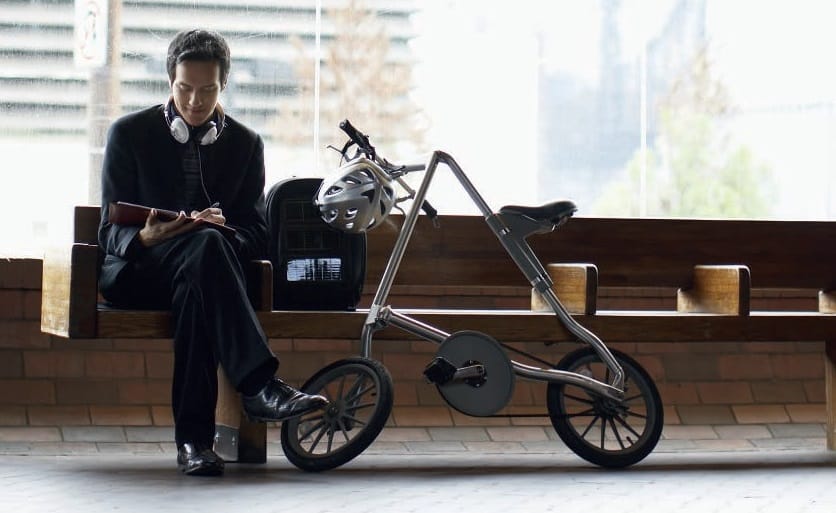
Orleans: a place with ambitious objectives #3 An encounter with Stéphanie Anton
4 minutes of reading
According to the UN News Centre, over two thirds of the global population will live in towns and cities by 2050. What with the increase in population and evolving ways of life and of consumption, urban centres are undergoing an in-depth transformation, accompanied by changing requirements in terms of mobility.

In collaboration with the Chronos research bureau and with numerous experts in this area, we study the way cities are adapting to these issues. Stéphanie Anton, Deputy Director of Sustainable Development for the city of Orleans, gives her thoughts on city-wide issues, aimed at both optimising its transport and making it more environmentally friendly. Let’s hear more about a place with ambitious objectives.


Deputy Director of Sustainable Development for the city of Orleans
What problems does the city of Orleans face in terms of transport?
Stéphanie Anton: We currently have a major issue in terms of mobility: offering modern transport solutions suited to the usage needs of city-centre inhabitants (made up of a vast historic centre that is poorly adapted to traditional public transport), and to the inhabitants of less dense, semi-urban townships where the inhabitants rely on their own vehicles. In its urban transport plan, currently being revised and at the public enquiry stage, the city has decided to look at several different aspects: – Strengthening the attractiveness of public transport by making it more efficient and promoting better sharing of the streets. – Developing sustainable transport by making the whole fleet of buses electric by 2024. – Incorporating emerging modes of transport (electric scooters, autonomous vehicles, etc.). – Extending transport solutions beyond the city to act coherently and in alignment with the six other town groups at the level of their living area. To this end, the city is setting itself ambitious objectives, namely to increase the modal share of eco-friendly, active transport, especially cycling by 3.5 points within ten years, and to aim for fewer than one journey out of two being made by private transport in ten years’ time, among others. It is not only a matter of facilitating mobility in the town centre and surrounding areas, but also of improving the air quality for residents by adopting an environmental approach. Finally, transport matters are key when you want to construct a resilient area that will respond to current environmental, health, economic and social issues.The ‘Towns and Transport: Reinventing Proximity’ draft book describes the proliferation of transport services in the city centre to the detriment of the suburbs. Do you see that in Orleans? And if you do, how do you try to respond to it?
Stéphanie Anton: Not ‘to the detriment of’ but ‘alongside’. We are in fact working on a rationale of complementary means of transport depending on the area (dense and less dense). What that means is making available a whole range of alternatives to the private motor vehicle (buses, trams. self-service or long-lease bikes, etc.) so that they are the preferred option to use in the city centre. At the same time, we are developing park-and-ride facilities around Orleans so that you can leave your car and take the tram or bus, as well as apps to follow the state of the traffic in real time and adapt your journeys accordingly. We are also offering express transport lines and more flexible transport systems for less dense areas; for example, the on-demand transport system ‘Résa’Est’ has been added to the existing service of fixed-timetable shuttles. This service has proved very promising, by so much as doubling usage. It was first tried out with the Paris start-up Padam and trialled in seven urban areas. The mobile app with geolocation also makes it possible to adapt the bus journey according to the demand by users for getting on and off the bus, and to optimise the level of occupancy.How is Orleans addressing the issue of transport with Paris? What are the issues around transport to and from the capital?
Stéphanie Anton: Paris is an essential link for the city’s development. We are just over one hour away from the capital by TER commuter rail, and one and half hours by car. The objective of Orleans is not to become a dormitory town, but to meet the needs of its residents and workers so that they are able to make the journeys required. Another of our approaches is to work on the promotion, attractiveness and development of tourism, for both leisure and business, in the region. In the longer term, we are looking at a SpaceTrain on air cushions, which would make it possible to travel to Paris from Orleans in 13 minutes. It’s a novel project put forward by the start-up DEVECO, which could become reality in five to ten years.More reading
Read also




What lies ahead? 7 megatrends and their influence on construction, real estate and urban development
Article
20 minutes of reading

